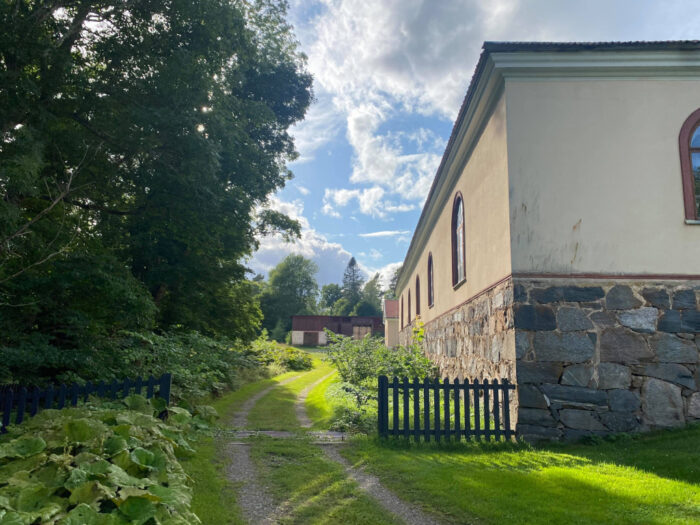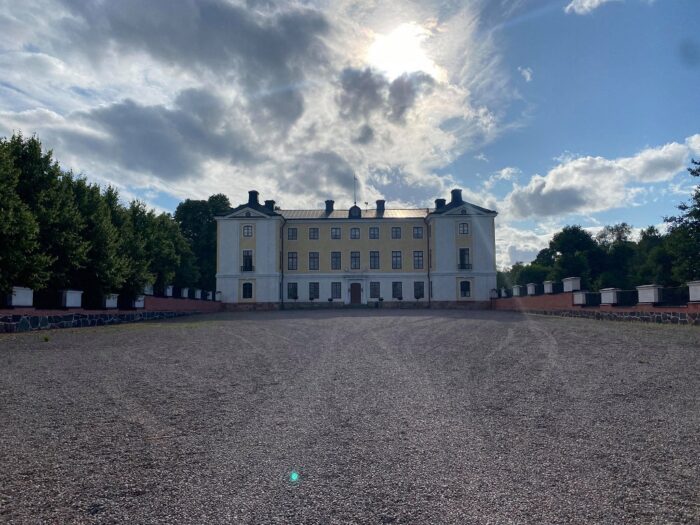Forsmark is a company town in the historical province of Uppland. This was once the location of industrial steel production but is today mostly known for the Forsmark Nuclear Power Plant that is located outside of the town. The former working population of the town has decreased over the last century and Forsmark is today home to about 60 inhabitants. It forms a part of Östhammar Municipality and Uppsala County. Even with the small population, there is still a lot of the industrial past to discover for any visitor.





A Short History of Forsmark
The company town has a long and in many parts unknown history. The Swedish Crown acquired it in 1570. The production of iron had been going on even before that time.
The Walloon Immigration
The production here was in the early part of the 17th century leased to traders and the development sped up. In addition to earlier hammers, the company town grew with new forges and blast furnaces. Forsmark, as well as many other company towns in the region, also experienced at this time a large Walloon immigration. The people mostly came from what is today Belgium and worked within the steel production all over Sweden. They are by many sources credited for much of the development of metallurgy in the country at these times.
A few decades later, two of the traders purchased the company town from the Swedish Crown. In the end, Gerard de Besche’s widow was the sole owner of the production. De Besche was born in 1585 in Liège, also a part of Wallonia.
Rebuilding the Company Town
Forsmark was one of several towns and villages along the Swedish east coast that were not spared during the Russian Pillage of 1719-21. As was the case with Gävle, Nyköping, Norrköping, and several other places in Sweden, Forsmark was burned to the ground. It was in July of 1719 that the Russians arrived and only a few buildings survived. Production was, however, only halted for a few years.
Forsmark saw several owners over the decades. Many of its owners have become famous in the industrial history of Sweden. Each new owner also meant new development within the town and its production.
The first mansion, now known as the Old mansion, was built by John Jennings in the mid 18th century. He was also the one who built the main mansion, less than a decade after the completion of the first. The current church was built by the next owner, Samuel af Ugglas, at the end of the century.
The Arrival of Nuclear Power
The steel production at Forsmark prospered until the end of the 19th century. Most of the steel production, however, discontinued before the end of the century.
Forsmark Kraftgrupp purchased the company town in 1975 purchased. The company had been established in 1972 with Vattenfall AB as one of the main owners. Forsmark was one of two locations considered for a nuclear power plant, the other being a peninsula outside of Trosa. A location a short distance outside of Forsmark was chosen for the power plant and the first reactor was opened in 1980. Within five years all three reactors at Forsmark were in production.
Forsmark was one of the first locations outside of the Soviet Union that in 1986 measured increased radioactivity. The measurements forced the Soviet Union to soon afterward acknowledge the disaster at the Chernobyl Nuclear Power Plant.
Forsmark Nuclear Power Plant had its own accident in 2006 when the plant momentarily lost power. The accident was managed without any further damage but led to additional measures being enforced at the Swedish nuclear power plants.





Things to Do and See
This is a historical ironworks and a nuclear power plant. The combination really creates a special opportunity for visitors to enjoy one of the best-preserved company towns in Sweden.
Forsmark Bruk
The whole town of Forsmark can be considered an open-air museum. The company town is well-preserved and has several of the historical buildings within easy reach on foot. Even the old residential homes of the workers follow in the same style as the rest of the town.
Forsmarks Herrgård
The main mansion of Forsmark was completed in 1774. It was ordered by the owner of the company town, John Jennings. It overlooks the ponds and nature of Engelska Parken. These days it is owned, as with the rest of the town, by the same company that owns the nuclear power plant. Its main use is for events representing the company.
Forsmarks Gamla Herrgård
John Jennings built two mansions in Forsmark. The first one, today known as the Old mansion, was completed in 1765. The mansion replaced two earlier mansions. The Russians destroyed the original mansion in 1719 and it was for a few decades replaced by a wooden mansion that was the foundation for what is today the old mansion.
Engelska Parken
Engelska Parken, The English Park, was established in 1784 and was completed a few decades later. In addition to the green nature around the water of the three ponds, there are also a few buildings and several memorials and decorations within the park.
Forsmark Ironworks Museum
In a former warehouse is the Forsmark Ironworks Museum. The museum displays objects and histories of the past life and works in the town.
Forsmark Church
The white church in Forsmark dates back to the year 1800 and was commissioned by the then-owner of the company town Samuel af Ugglas. The current stone church replaced an earlier wooden church from 1613.
Forsmark Nuclear Power Plant
A short distance outside of the town is the Forsmark Nuclear Power Plant. The plant is open for occasional guided visits. But for most visitors of Forsmark, it is the old company town that is the main attraction.





How to Get to Forsmark
- Flights: The closest major airport is Stockholm-Arlanda Airport, 102 kilometers away with both domestic and international flights.
- Car: Forsmark is along road 76 between Gävle and Östhammar.
- Bus: Local and regional UL buses connect Forsmark with the surrounding region.
The driving distance from 5 major Swedish cities, according to Google Maps:
- Stockholm – 138 kilometers (1 h 57 min)
- Gothenburg – 603 kilometers (6 h 22 min)
- Malmö – 747 kilometers (7 h 46 min)
- Linköping – 334 kilometers (3 h 54 min)
- Kiruna – 1154 kilometers (13 h 14 min)
Find out more about other destinations in Sweden by visiting our page Exploring Sweden






